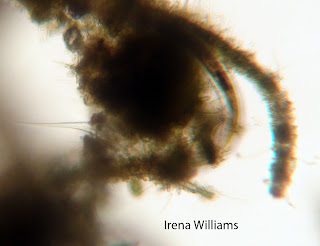I did my last observation on Wednesday, November 10, 2010. I didn't notice any changes since the previous week. There were still quite a few Tachysomas throughout the MicroAquarium, as well as several Seed Shrimp and Cyclopses. I was finally able to spot a Nematoda, which may be the mysterious organism I kept spotting but not being able to see clearly enough to identify.
Nematoda (identified from Thorp and Covich 1991)
Tachysoma
Citations:
Thorp, James, and Alan Covich. Ecology and Classification of North American Freshwater Invertebrates. 1991. San Diego, New York, Boston, London, Sydney, Tokyo, Toronto: Academic Press, Inc. p. 250



.jpg)

.jpg)